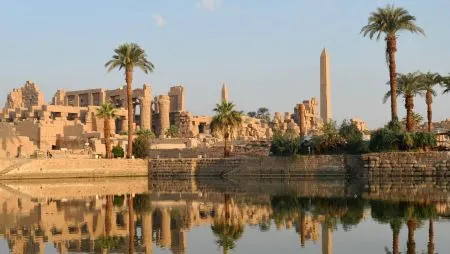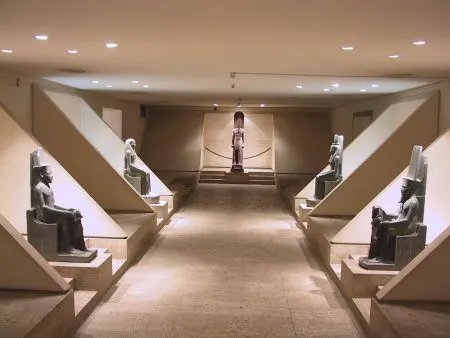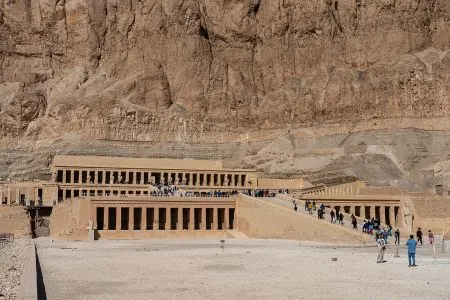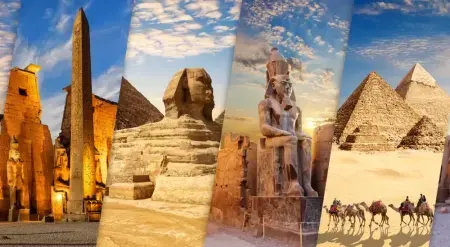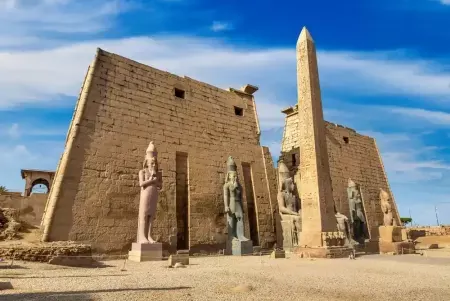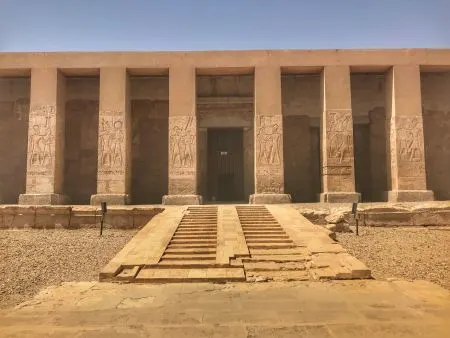Planning a day trip in Luxor and wondering what lies beyond the city’s ancient monuments? The Luxor to Dendera Temple tour is one of the most rewarding excursions in Upper Egypt. Situated about 60 km north of Luxor on the west bank of the Nile, the Dendera Temple Luxor experience offers travelers a chance to witness one of Egypt’s best-preserved sanctuaries dedicated to Hathor, the goddess of love, joy, and music.
A Luxor trip to Dendera blends spirituality, mythology, and artistry in one unforgettable journey. Whether you’re an avid history buff or simply looking to add a new perspective to your Luxor sightseeing tours, this site is a must-see.
History of the Dendera Temple
The Dendera Temple complex is older than 4,000 years, and its foundations are considered to be from the time of the Old Kingdom in Egypt. However, the current temple structure is mostly from the Ptolemaic period, during the reign of Ptolemy XII (54 BC) and was finished in the time of the Roman emperors Tiberius and Trajan.
Consequently, Cleopatra VII herself was involved in some parts of the temple's decorations, which made the temple an enduring symbol of her rule. This has given rise to a rare blending of Pharaonic and Greco-Roman art, a work of art that still attracts people's curiosity and imagination as they move from Luxor to Dendera.
The Beauty of Dendera, Luxor
The Temple of Hathor is the main temple of a large complex that is approximately 40,000 m² in size and is surrounded by strong mud-brick walls. Upon entering the temple, the first thing that catches the eye is an enormous hypostyle hall with 24 columns, each one of them having the goddess Hathor's face sculpted as its capital.
There are a lot of interesting small sanctuaries, roof chapels, and mysterious underground crypts where the holy items were once kept to be found inside the temple. One can also see the magnificent astronomical carvings on the ceiling of the main hall—symbols for stars, deities, and the famed Dendera Zodiac, an ancient celestial map that is now the pride of the Louvre Museum.
To visit here is to experience the living time capsule of ancient Egyptian cosmology.
Religious and Cultural Significance
Dendera was an important place of worship for Hathor, one of the most significant gods in Egyptian mythology, in the ancient world. People came from far and wide to take part in the festivities of the goddess, at which time she was believed to meet Horus from Edfu again—a symbolic representation of love and peace between gods.
The ceremonies conducted at the Dendera Temple in Luxor give us a glimpse of Egypt’s sophisticated spiritual practices, magnificent art, and scientific knowledge in astronomy. The stories told by every carving and writing are varied and range from the creator's nurturing aspect as a mother to the perpetual equilibrium of the universe.
Unique Features and Artifacts
A Luxor to Dendera temple day trip unfolds a lot of fascinating highlights:
The Dendera Zodiac: A round sculpture that indicates signs of the zodiac, planets and stars, and it is significant evidence of the Egyptians' knowledge of astronomy.
The Birth Houses (Mammisi): These buildings are the environmental celebration of the divine birth of Ihy, the heir of Hathor. Arcane reliefs depict his historic arrival.
The Crypts and "Dendera Light": Concealed places have secret ones of strange carvings, One very similar to a bulb shape that is very often taken as an ancient electric lamp but is in fact a representation of creation myths.
Cleopatra VII and Caesarion Reliefs: Beautiful figures of the last Ptolemaic queen and her son with Julius Caesar. Royal worship of Hathor is shown through their representations.
Each aspect of the Dendera-Luxor location illustrates clearly the themes of devotion, mythology, and cosmic wisdom that were characteristic of the Golden Age of Egypt.
Why Add Dendera to Your Luxor Day Trips
A journey from Luxor to Dendera makes for one of the best day trips from Luxor, perfect for travelers seeking an off-the-beaten-path adventure. The drive takes roughly 1 hour and 15 minutes, offering scenic views of rural life along the Nile.
A trip to Dendera does not only mean coming across a new temple but it also means getting a taste of the diversity of Egypt in terms of art and religion. Dendera is an ideal addition for visitors who plan to see the Valley of the Kings, Karnak Temple, and Hatshepsut’s Temple; the famed Luxor sightseeing tours; or those who make Egypt day trips combining sightseeing.
The Luxor to Dendera Temple trip is now part of many Egypt tours and is offered as either a half-day or full-day option, thus providing tourists with the opportunity to explore the site’s wonders at their own leisurely pace.
Tips for Visiting the Dendera Temple
Best Timing for Visiting: During the period from October to April, pleasantly cool weather and fewer people will be your companions.
Suggested Length of Stay: The minimum time you should allocate to roaming around the temple complex, old tombs, and outer places is 2-3 hours.
Things to Carry: Sunblock, a hat, bottled water, and comfy shoes because the majority of the site is in the sun.
Photography: In most areas, it is acceptable—make sure you take your camera for the artistic ceilings and reliefs.
Reaching the Place: By private cars, organized Day trips in Luxor, or Luxor tours through a reliable operator like Around Egypt Tours.
Dendera Temple—A Must-See Addition to Your Luxor Trip
Dendera Temple is one of the most impressive attractions among the many things to do in Luxor thanks to its incredible preservation and mythical beauty. This is a very amazing encounter because with one of the most artistically rich monuments in Egypt, you are actually there and each wall is telling a sacred story.

